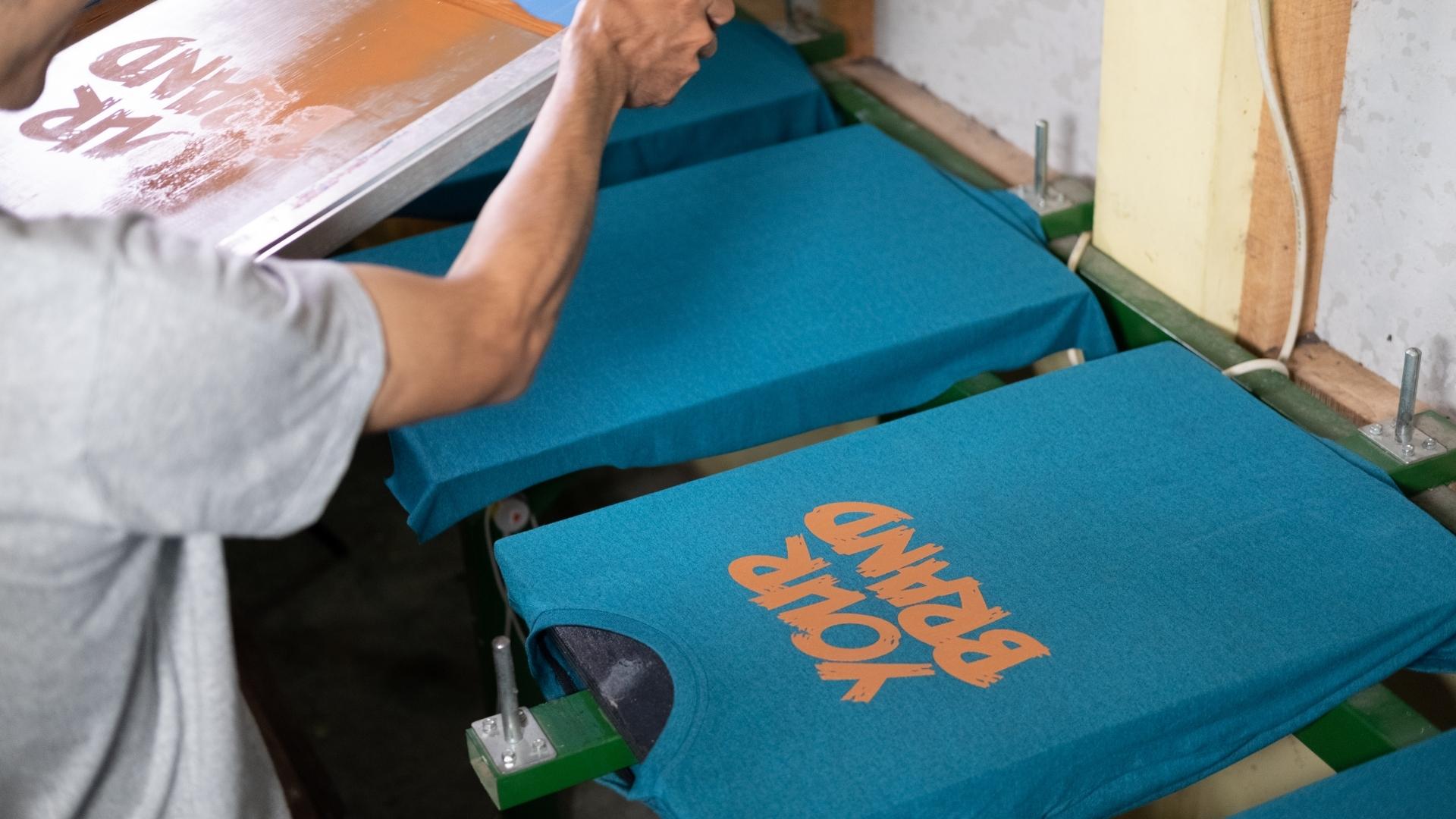The Vital Overview to Comprehending Screen Printing and Its Versatile Makes use of
Screen printing has a rich history that goes back to old times, developing right into an innovative technique utilized throughout numerous industries today. This guide checks out the details of the screen printing process, outlining its applications in home, style, and advertising design - 10:9 Design Screen Printing. Recognizing these fundamentals can open creative capacity for both creative and business jobs. The following areas will reveal necessary ideas and techniques to improve one's screen printing endeavors
The History of Screen Printing
Screen printing has roots that trace back centuries, its advancement shows the technological and artistic improvements of various societies. Coming from ancient China, the technique was originally utilized for decorating fabrics and later spread to Japan, where it became indispensable to Ukiyo-e woodblock printing. The technique shifted to Europe in the 18th century, where it obtained appeal among craftsmens and commercial printers. The invention of picture emulsion in the 20th century revolutionized screen printing, permitting more detailed layouts and higher efficiency. Musicians like Andy Warhol even more propelled its appeal, using the tool to produce iconic jobs that blended commercialism and art. By the late 20th century, screen printing had developed itself as a functional method, employed in vogue, marketing, and great art. Today, it continues to advance, integrating electronic innovation and expanding its applications throughout numerous markets.
The Screen Printing Refine Explained
Screen printing transforms imaginative visions into substantial styles through a collection of precise steps. A picture is produced and then moved onto a screen, generally made of great mesh textile extended over a frame. A light-sensitive solution is put on the screen, which is exposed to light, hardening in locations not covered by the picture. After rinsing the unhardened solution, a stencil is formed.
Next off, the screen is positioned over the substrate, whether it be fabric, paper, or another product. Ink is then pushed with the open areas of the stencil utilizing a squeegee, transferring the style onto the substratum below. This process can be repeated for several colors, requiring separate screens for each shade. Lastly, the printed product is treated utilizing warm to ensure the ink adheres effectively, causing a durable, dynamic design prepared for use.
Sorts Of Screen Printing Techniques
.png)
Furthermore, specialized strategies, such as discharge screen printing, eliminate dye from the fabric to develop softer prints, while aluminum foil screen printing applies metallic foil to accomplish a shiny surface (10:9 Design contact). Each strategy supplies distinctive characteristics, satisfying numerous innovative needs and manufacturing scales, inevitably broadening the opportunities within the screen printing domain name
Applications of Screen Printing in Different Industries

In addition, the signage and advertising markets make use of screen printing for creating captivating displays and banners. This technique permits vibrant shades and intricate designs that catch interest. In electronic devices, screen printing is used for using conductive inks to circuit boards, vital for element links. The home decoration market accepts screen printing to create unique styles on textiles and wall art. Overall, screen printing serves as a crucial tool across varied fields, boosting items with individualized and aesthetically attractive graphics.
Tips for Successful Screen Printing Projects
While carrying out a screen printing task, mindful attention to information can significantly improve the final result. Initially, picking premium products is essential; this consists of the screen, inks, and substratums. Using proper mesh counts can impact ink deposition and information resolution. Prep work is equally crucial; comprehensive cleaning of displays and appropriate exposure times assure crisp prints.
Next, exact registration is crucial for multi-color prints. Making use of positioning devices can assist achieve exact layering. Furthermore, screening prints on scrap materials before production aids identify possible issues without throwing away resources.

Frequently Asked Inquiries
What Materials Are Best for Screen Printing on Material?
Cotton and polyester blends are perfect for screen printing on textile due to their durability and ink absorption. Furthermore, specialty materials like silk or canvas can produce special appearances and surfaces, enhancing the total design high quality.
Exactly how Do I Clean and Maintain Screen Printing Tools?
To maintain and cleanse screen printing equipment, one need to on a regular basis wash screens with appropriate solvents, evaluate mops for wear, lube relocating components, and shop all things in a completely dry, dust-free environment to prolong their life expectancy.
What Are the Environmental Effects of Screen Printing?
Screen printing can have considerable ecological influences, consisting of chemical waste from solvents and inks, water use during cleaning processes, and power usage. Eco-friendly products and sustainable techniques are important for lessening these negative effects.
Can Screen Printing Be Done at Home Effectively?
Screen printing can be properly done at home with the best materials and techniques. Enthusiasts can produce top quality prints, though success relies on their skill level, equipment, and understanding of the procedure included.
What Are the Costs Connected With Beginning a Screen Printing Organization?

Beginning a screen printing company includes costs for devices, products, and office. Initial costs normally range from a few hundred to numerous thousand dollars, depending upon the scale, high quality of equipment, and wanted production capability.
Screen printing has an abundant history that dates back to ancient times, evolving into an advanced method made use of throughout numerous sectors today. Another method, rotating screen printing, utilizes round screens, facilitating continual printing on textile rolls, consequently boosting efficiency for massive productions. Furthermore, specialized strategies, such as discharge screen printing, remove color from the fabric to create softer prints, while aluminum foil screen get more info printing uses metallic aluminum foil to accomplish a glossy finish. In the fashion industry, screen printing is extensively utilized to develop dynamic designs on garments, making it possible for brands to display their special styles. Cotton and polyester blends are ideal for screen printing on material due to their durability and ink absorption.